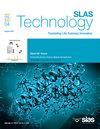Deciphering the role of heat shock protein HSPA1L: biomarker discovery and prognostic insights in Parkinson's disease and glioma
IF 2.5
4区 医学
Q3 BIOCHEMICAL RESEARCH METHODS
引用次数: 0
Abstract
Background
Heat shock proteins (HSPs) play a critical role in cellular stress responses and have been implicated in numerous diseases, including Parkinson's disease (PD) and various cancers. Understanding the differential expression and functional implications of HSPs in these conditions is crucial for identifying potential therapeutic targets and biomarkers for diagnosis and prognosis.
Methods
We utilized combined datasets (GSE6613 and GSE72267) to identify and analyze the heat shock-related genes differentially expressed in PD. Gene Set Variation Analysis (GSVA) was performed to explore functional profiles, while LASSO regression was employed to screen potential PD biomarkers. In glioma, prognostic value, immune infiltration, and pathway enrichment associated with HSPA1L gene expression were assessed via Kaplan-Meier plots, ssGSEA, and enrichment analyses.
Results
In PD, we identified 17 differentially expressed HSPs. Enrichment analysis revealed significant pathways related to protein homeostasis and cellular stress responses. LASSO regression pinpointed 12 genes, including HSPA1L, as significant markers for PD, with nomogram and calibration plots indicating predictive accuracy. Stratification based on HSPA1L expression in PD highlighted differentially active biological processes, immune responses, and metabolic disruptions. In the pan-cancer analysis, HSPA1L showed variable expression across cancer types and a significant correlation with patient survival and immune infiltration. In glioma, low HSPA1L expression was associated with worse overall survival, distinct immune infiltration patterns, and altered pathway activities.
Conclusion
This integrative study reveals the substantial role of HSPs, especially HSPA1L, in the pathogenesis and prognosis of PD and glioma. Our findings offer new perspectives on the molecular mechanisms underlying these diseases and propose HSPA1L as a potential prognostic biomarker and a target for therapeutic intervention.
解读热休克蛋白 HSPA1L 的作用:发现帕金森病和胶质瘤的生物标志物并深入了解其预后。
背景:热休克蛋白(HSPs)在细胞应激反应中发挥着关键作用,并与包括帕金森病(PD)和各种癌症在内的多种疾病有关。了解 HSPs 在这些疾病中的不同表达和功能影响对于确定潜在的治疗靶点以及诊断和预后的生物标记物至关重要:我们利用合并数据集(GSE6613 和 GSE72267)来鉴定和分析在帕金森病中差异表达的热休克相关基因。基因组变异分析(Gene Set Variation Analysis,GSVA)用于探索功能特征,LASSO回归用于筛选潜在的PD生物标志物。在胶质瘤中,通过Kaplan-Meier图、ssGSEA和富集分析评估了与HSPA1L基因表达相关的预后价值、免疫浸润和通路富集:结果:在帕金森病中,我们发现了17种差异表达的HSP。富集分析揭示了与蛋白质稳态和细胞应激反应相关的重要通路。LASSO回归确定了包括HSPA1L在内的12个基因为PD的重要标记,提名图和校准图显示了预测的准确性。基于 HSPA1L 表达的 PD 分层突显了不同的活跃生物过程、免疫反应和代谢紊乱。在泛癌症分析中,HSPA1L在不同癌症类型中的表达各不相同,并且与患者生存期和免疫浸润有显著相关性。在胶质瘤中,HSPA1L的低表达与较差的总生存率、独特的免疫浸润模式和改变的通路活动有关:这项综合研究揭示了 HSPs(尤其是 HSPA1L)在帕金森病和胶质瘤的发病机制和预后中的重要作用。我们的研究结果为这些疾病的分子机制提供了新的视角,并提出将HSPA1L作为潜在的预后生物标志物和治疗干预靶点。
本文章由计算机程序翻译,如有差异,请以英文原文为准。
求助全文
约1分钟内获得全文
求助全文
来源期刊

SLAS Technology
Computer Science-Computer Science Applications
CiteScore
6.30
自引率
7.40%
发文量
47
审稿时长
106 days
期刊介绍:
SLAS Technology emphasizes scientific and technical advances that enable and improve life sciences research and development; drug-delivery; diagnostics; biomedical and molecular imaging; and personalized and precision medicine. This includes high-throughput and other laboratory automation technologies; micro/nanotechnologies; analytical, separation and quantitative techniques; synthetic chemistry and biology; informatics (data analysis, statistics, bio, genomic and chemoinformatics); and more.
 求助内容:
求助内容: 应助结果提醒方式:
应助结果提醒方式:


